Odoo 18 introduces an enhanced Rental application that’s designed to streamline how businesses manage rental-based operations. From booking to return, invoicing to tracking availability, Odoo 18 automates and simplifies every part of the rental workflow. Whether you're a business that rents out furniture, equipment, vehicles, or event supplies, this blog will walk you through how Odoo 18 handles rental orders efficiently.
What is the Odoo Rental Module?
The Odoo Rental module is a specialized application within the Odoo ecosystem that allows companies to rent out products and manage those transactions seamlessly. Unlike standard sales orders, rental orders track the product’s expected and actual usage periods, return status, condition, and associated invoicing.
Odoo 18 makes this process even smoother with tighter integrations, enhanced scheduling, and better conflict handling.
Initial Setup Before Creating Rental Orders
Install the Rental Module
Before diving into the rental process, make sure you configure your system properly.
Go to Apps > Rental and install it. Once installed, it adds a new Rental menu to your Odoo interface.
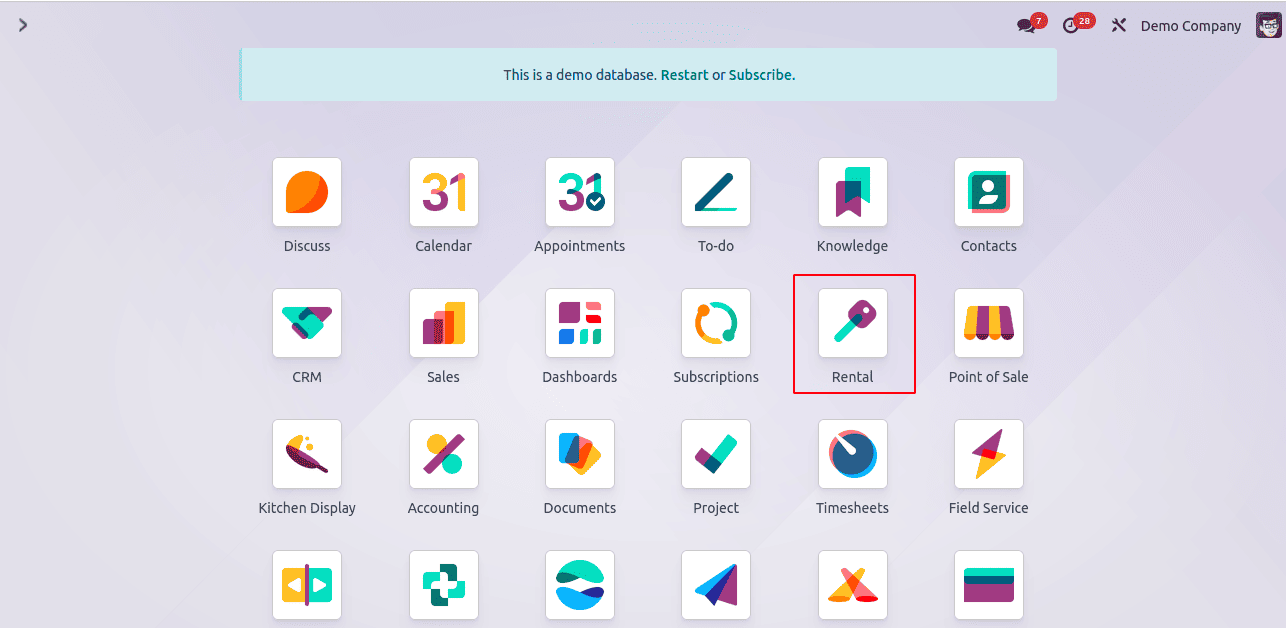
Configure Rental Products
To rent out items in Odoo 18, each product must be correctly configured. This can be done by going to Rental > Products, then either creating a new product or editing an existing one. Make sure both the Sales and Rental options are enabled. In the Rental prices tab of the product form, you can define rental pricing rules based on various time units such as hour, day, week, or month. You can also set a Security Time, which temporarily marks the product as unavailable between two rental orders to allow for tasks like cleaning, maintenance, or transportation.
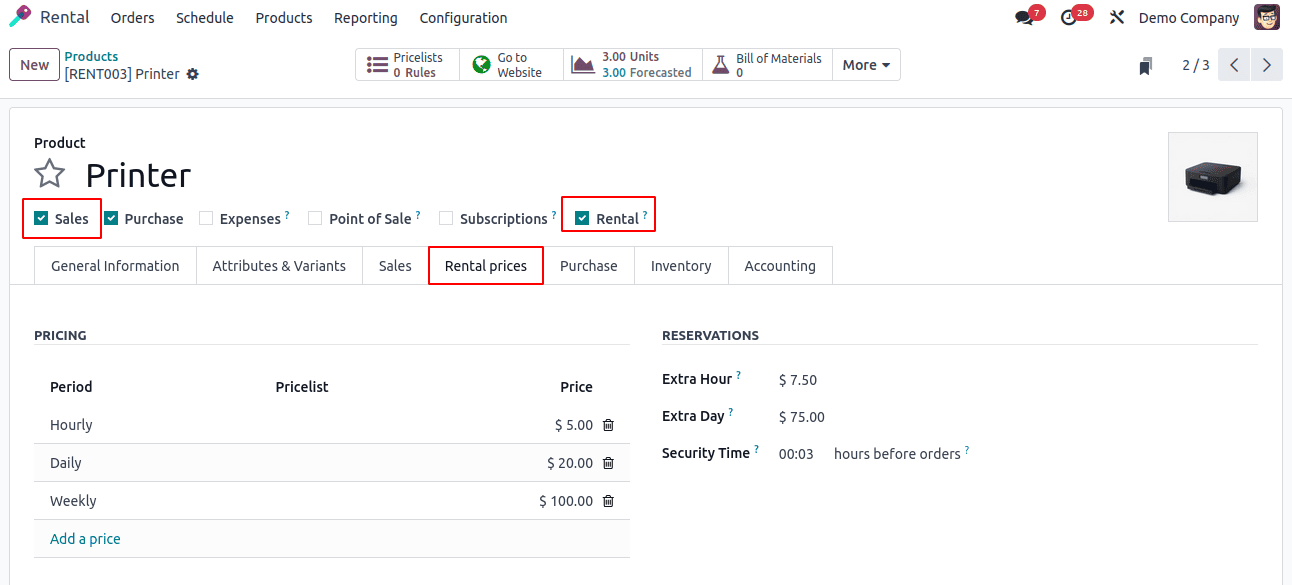
Rental Workflow in Odoo 18 – Step-by-Step
Now that you’ve configured your rental products, let’s walk through how Odoo handles rental orders.
To create a rental order in Odoo 18, navigate to Rental > Orders > Orders, and click New.
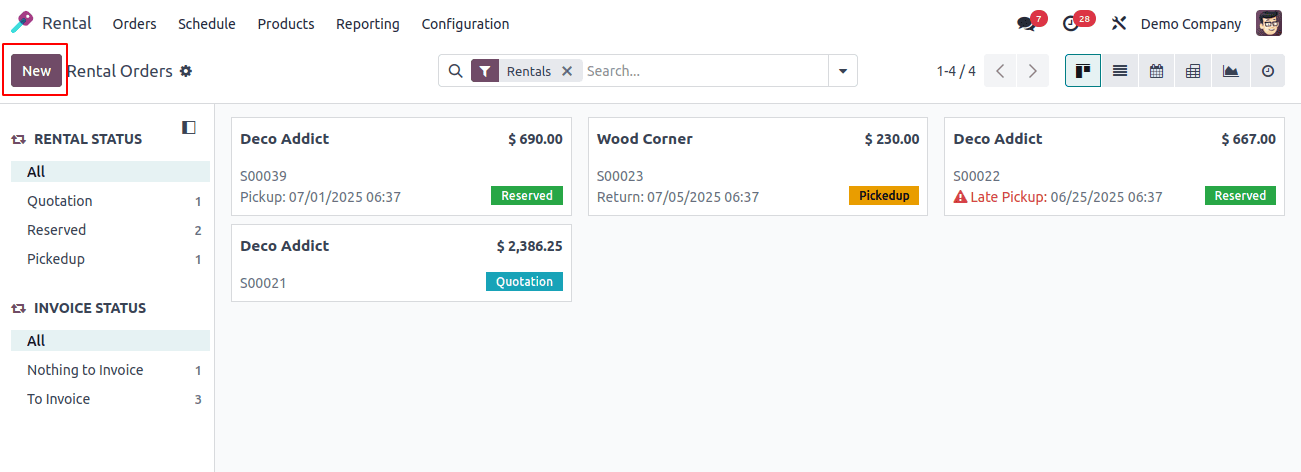
In the rental quotation form, begin by selecting the Customer, then specify the Rental Period by setting the start date and return date. Next, add the desired rental products along with their quantities. Odoo will automatically check the availability of each product based on its rental schedule, helping you avoid overbooking or scheduling conflicts.
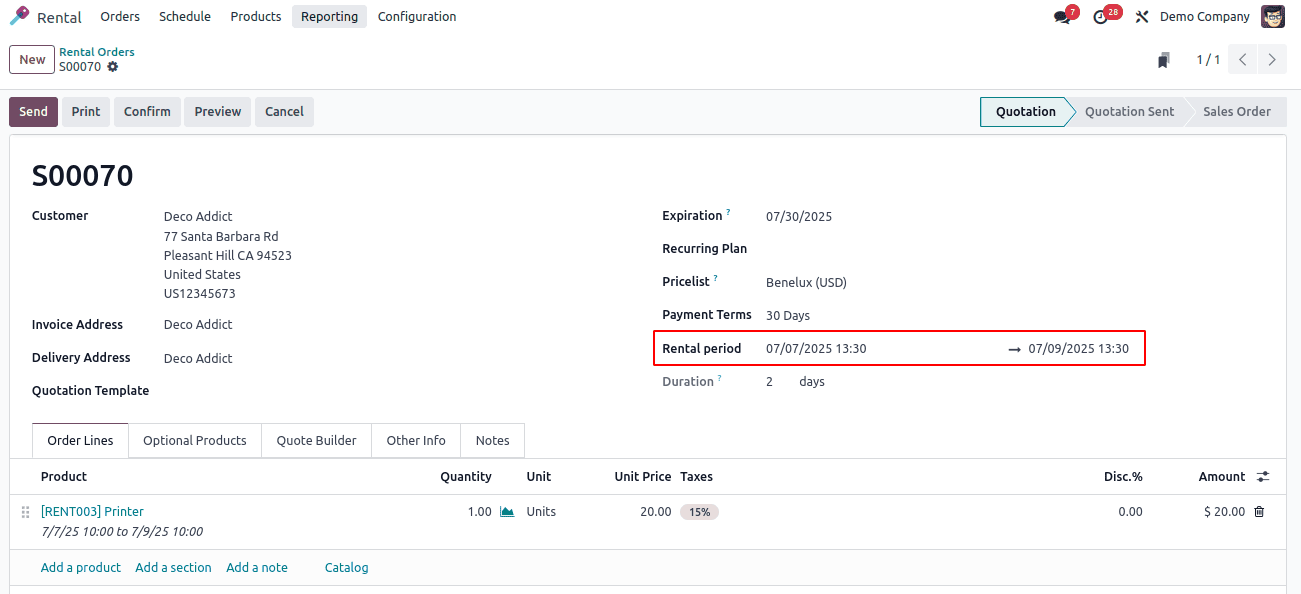
Tip: You can use the Calendar View to get a visual representation of all current and future rentals.
After finalizing the quotation, click Confirm to validate the rental order. Once confirmed, the status changes from Quotation to Sale Order, and the state is updated to Booked. At this point, inventory managers can begin preparing the rental items for pickup or arrange their delivery to the customer.
To enable the creation of delivery orders for rental products, go to Configuration > Settings and activate the Rental Transfers option.
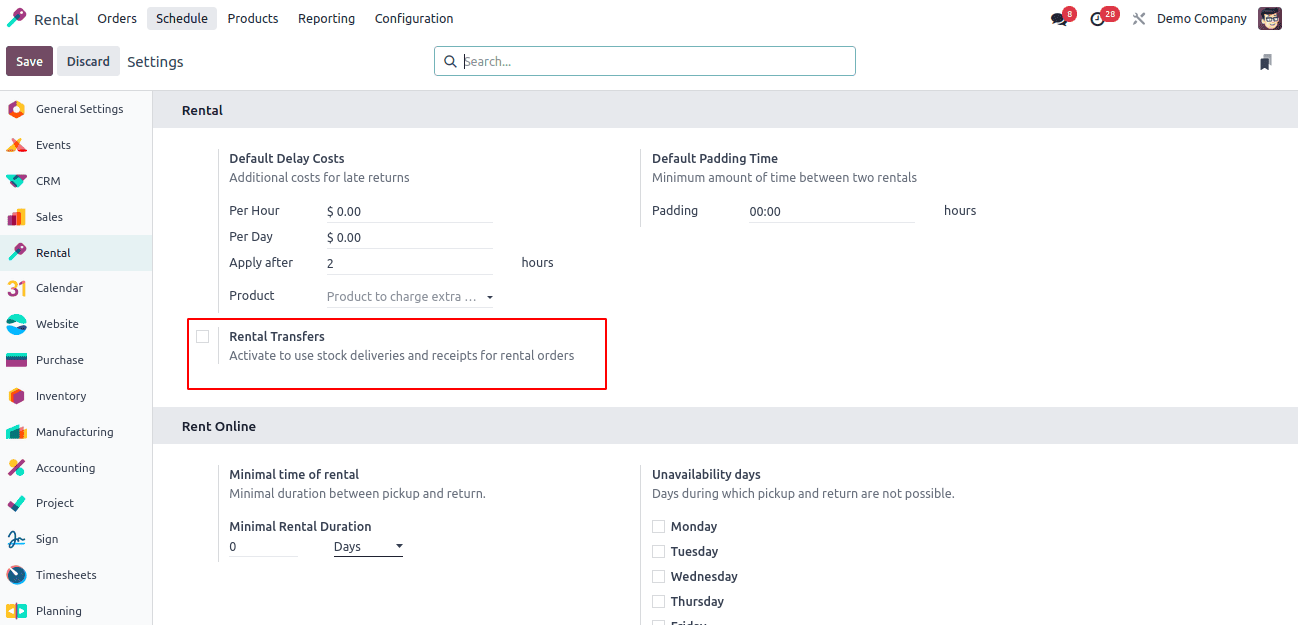
When a customer arrives to pick up the items, click the Pickup button in the rental order.
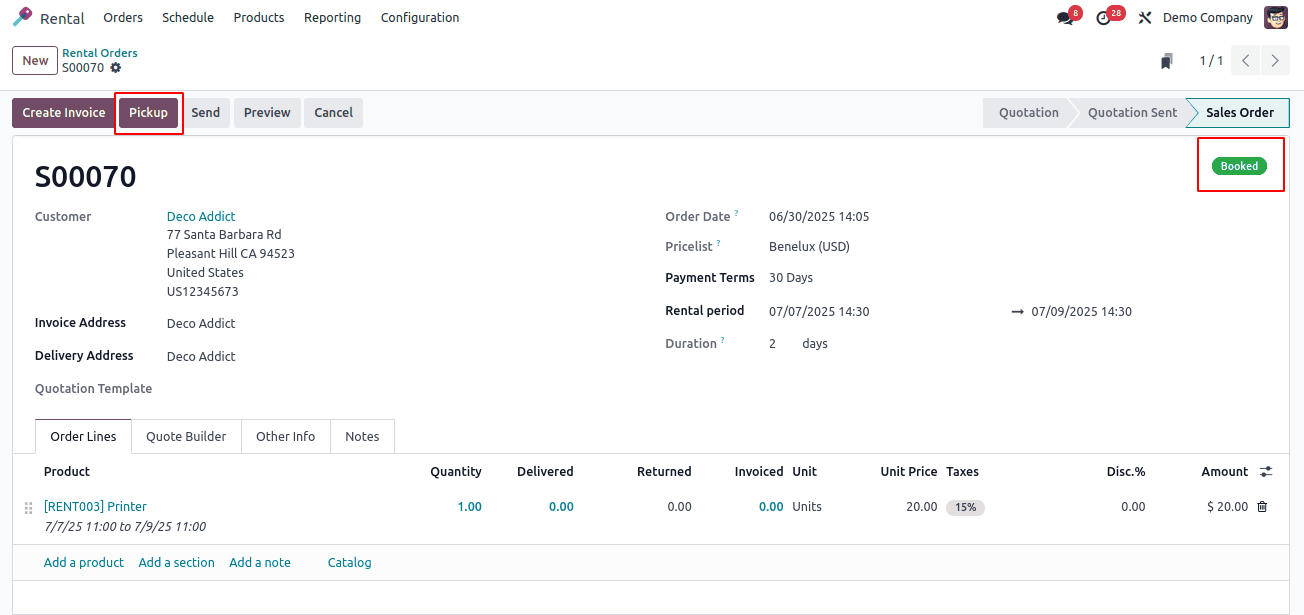
Confirm the action by clicking Validate in the pop-up form. This updates the rental order with a Picked-up status banner.
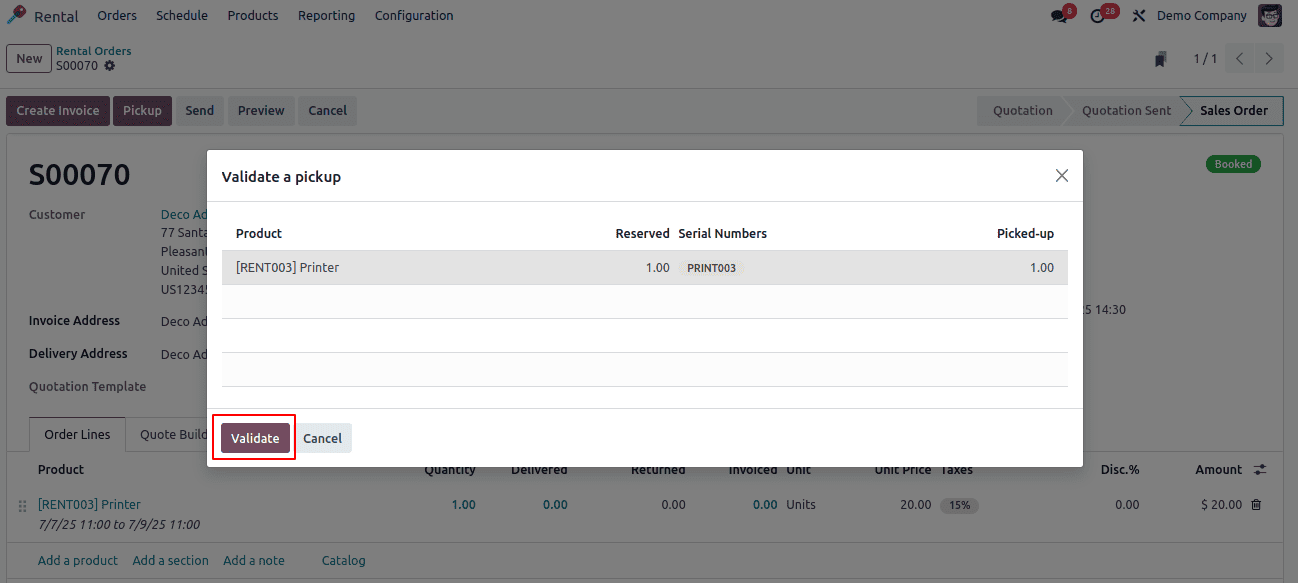
Similarly, when the customer returns the items, access the rental order, click the Return button, and validate the return through the pop-up form.
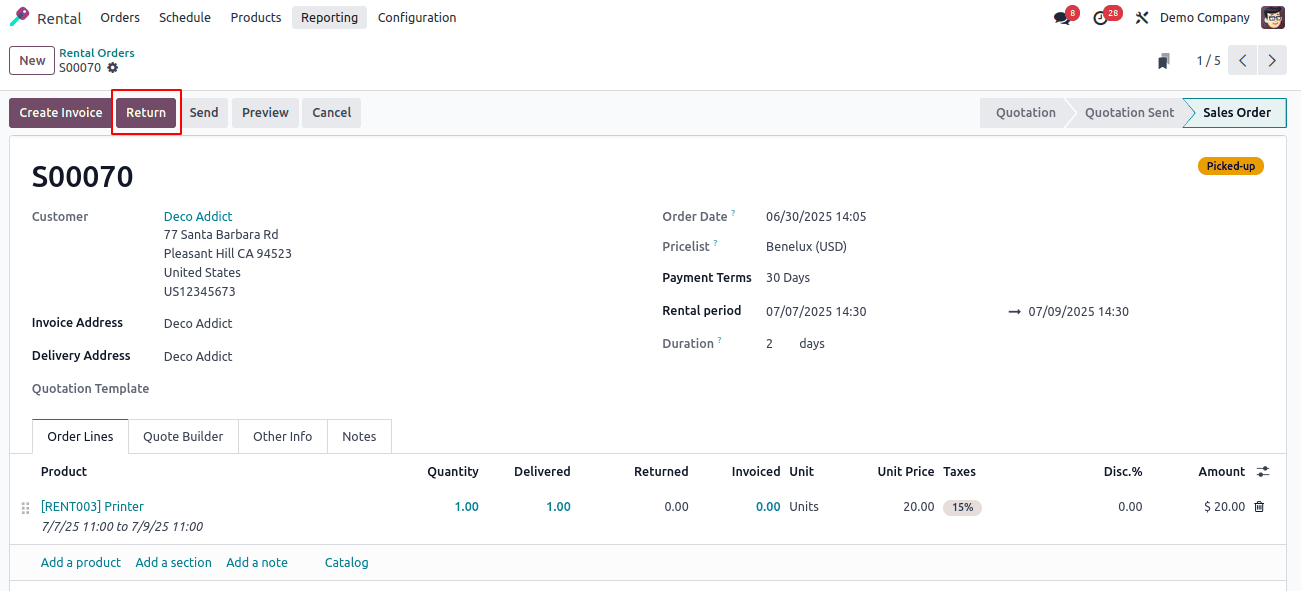
Once done, the rental order will display a Returned status banner.
Odoo 18 offers flexible options for invoicing rental orders, allowing businesses to bill customers before the rental begins, during the rental period (e.g., on a monthly basis), or after the items have been returned, based on the actual rental duration or the condition of the returned products. To create an invoice, click the Create Invoice button and confirm the draft invoice.
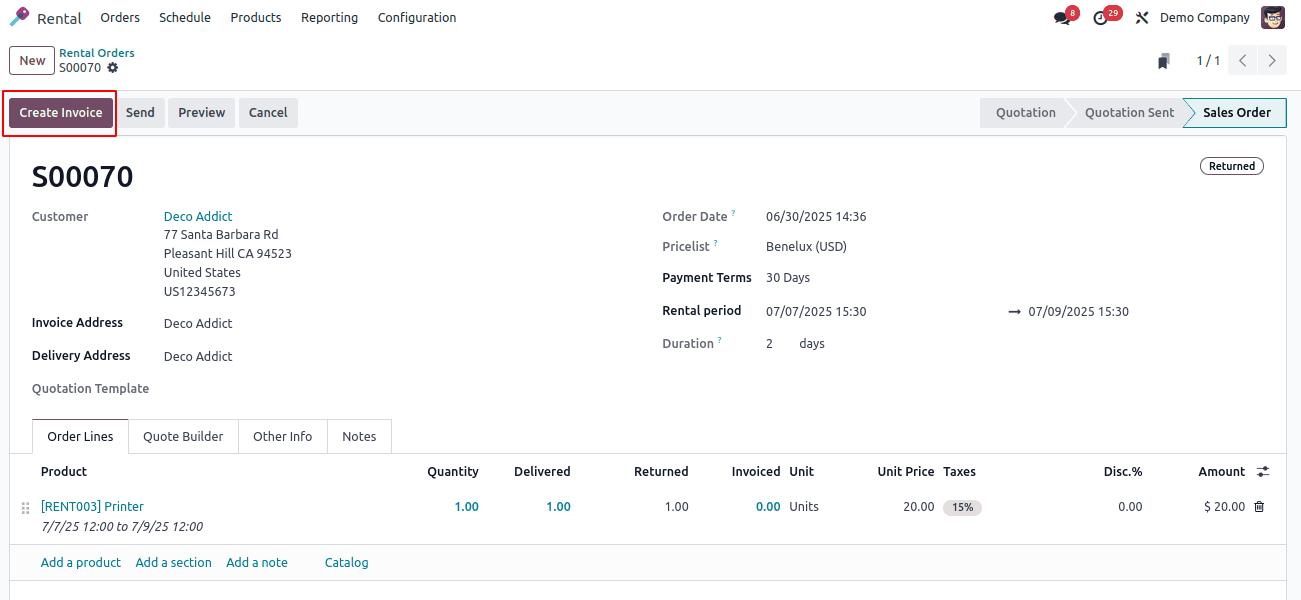
Odoo effectively manages late returns by monitoring the expected return date and automatically calculating late fees when items are returned past the scheduled time. This feature can be configured within the configuration > settings.
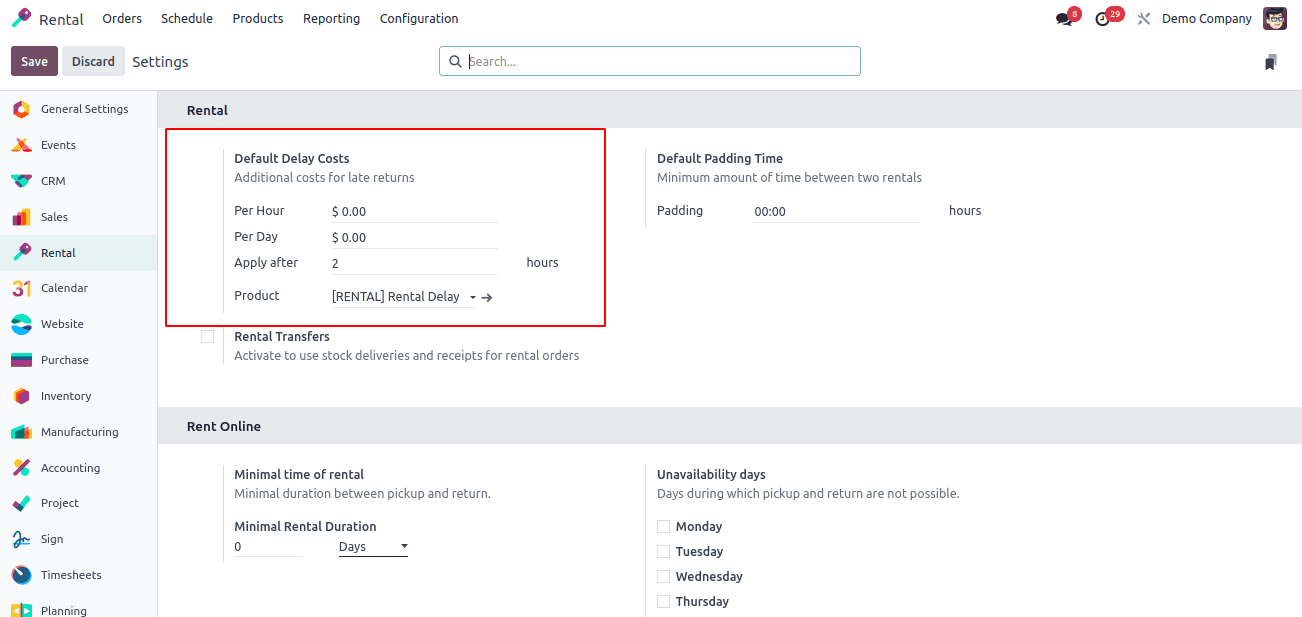
Pickup and return receipts can be provided to customers when they collect or return rental products. To print these receipts, click the gear icon to access the drop-down menu, and select Pickup and Return Receipt to generate and print the document.
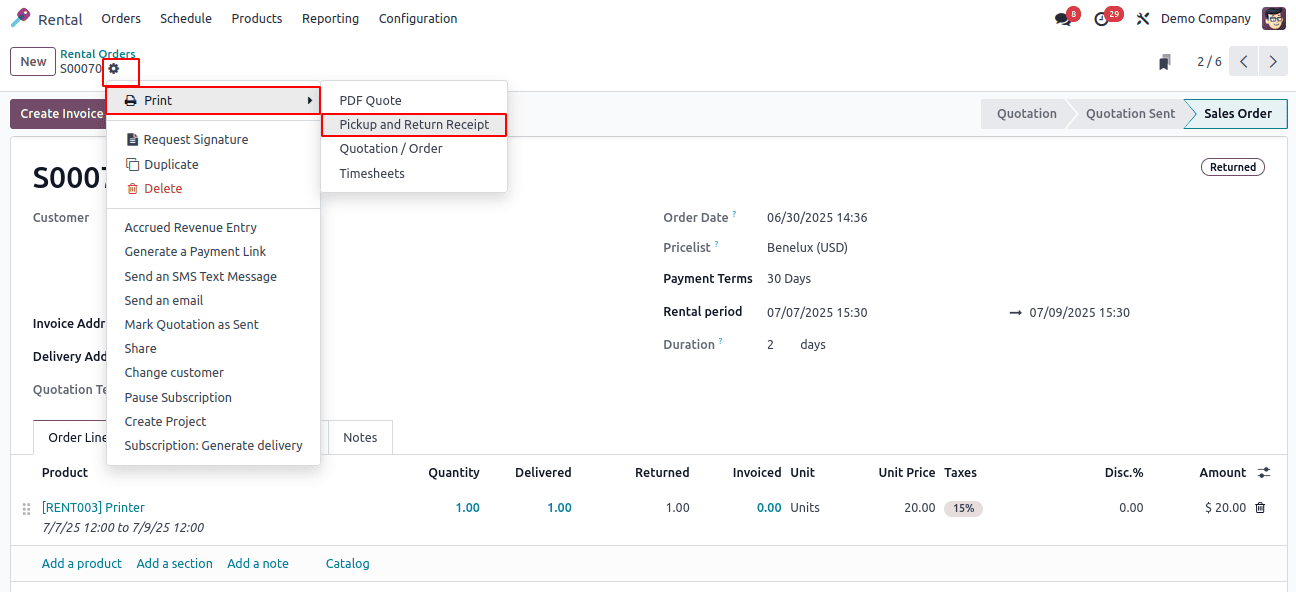
With the Odoo 18 Rental module, managing rental operations has never been easier. Its user-friendly design, powerful automation, and seamless integration make it ideal for any business offering rental services.
From small tool rental shops to large event equipment businesses, Odoo ensures you can focus more on your customers and less on managing manual operations.
To read more about How to Create & Manage Rental Requests from a Lead in Odoo 18, refer to our blog How to Create & Manage Rental Requests from a Lead in Odoo 18.